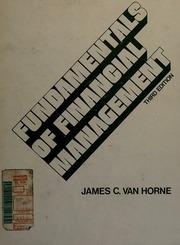Question
1.) Caspian Sea Drinks is considering the purchase of a plum juicer the PJX5. There is no planned increase in production. The PJX5 will reduce
1.)
Caspian Sea Drinks is considering the purchase of a plum juicer the PJX5. There is no planned increase in production. The PJX5 will reduce costs by squeezing more juice from each plum and doing so in a more efficient manner. Mr. Bensen gave Derek the following information. What is the IRR of the PJX5?
a. The PJX5 will cost $1.82 million fully installed and has a 10 year life. It will be depreciated to a book value of $219,797.00 and sold for that amount in year 10.
b. The Engineering Department spent $39,063.00 researching the various juicers.
c. Portions of the plant floor have been redesigned to accommodate the juicer at a cost of $22,328.00.
d. The PJX5 will reduce operating costs by $346,071.00 per year.
e. CSDs marginal tax rate is 28.00%.
f. CSD is 64.00% equity-financed.
g. CSDs 18.00-year, semi-annual pay, 6.62% coupon bond sells for $1,028.00.
h. CSDs stock currently has a market value of $21.41 and Mr. Bensen believes the market estimates that dividends will grow at 4.10% forever. Next years dividend is projected to be
2.)
Caspian Sea Drinks is considering the production of a diet drink. The expansion of the plant and the purchase of the equipment necessary to produce the diet drink will cost $27.00 million. The plant and equipment will be depreciated over 10 years to a book value of $3.00 million, and sold for that amount in year 10. Net working capital will increase by $1.39 million at the beginning of the project and will be recovered at the end. The new diet drink will produce revenues of $9.27 million per year and cost $2.44 million per year over the 10-year life of the project. Marketing estimates 17.00% of the buyers of the diet drink will be people who will switch from the regular drink. The marginal tax rate is 21.00%. The WACC is 13.00%. Find the NPV (net present value).
3.)
Caspian Sea Drinks is considering the production of a diet drink. The expansion of the plant and the purchase of the equipment necessary to produce the diet drink will cost $26.00 million. The plant and equipment will be depreciated over 10 years to a book value of $1.00 million, and sold for that amount in year 10. Net working capital will increase by $1.03 million at the beginning of the project and will be recovered at the end. The new diet drink will produce revenues of $9.16 million per year and cost $1.82 million per year over the 10-year life of the project. Marketing estimates 17.00% of the buyers of the diet drink will be people who will switch from the regular drink. The marginal tax rate is 28.00%. The WACC is 14.00%. Find the IRR (internal rate of return).
Step by Step Solution
There are 3 Steps involved in it
Step: 1

Get Instant Access to Expert-Tailored Solutions
See step-by-step solutions with expert insights and AI powered tools for academic success
Step: 2

Step: 3

Ace Your Homework with AI
Get the answers you need in no time with our AI-driven, step-by-step assistance
Get Started


